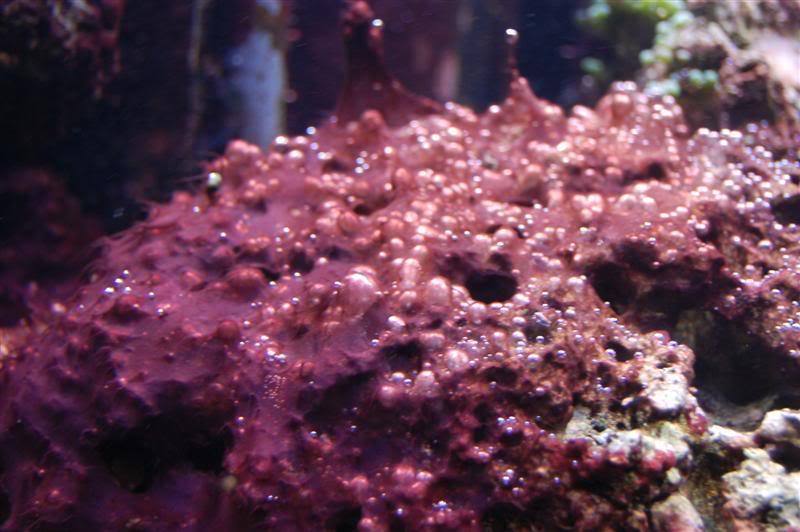Cyanobacteria, known as cyano for short, may look like an algae and even spread like an algae but is, in fact, a type of bacteria. It spreads fast through the tank and can smother corals in no time at all. It makes the rocks you have worked so hard for look nasty and ugly. We’ll discuss what some causes of cyano are and how to treat this issue.
Every reef keeper has had a run in with cyano at one time or another. It’s one of the oldest bacteria on our planet so it’s no surprise it makes it’s way into our tanks from time to time. It’s called cyano because it can take a very cyan color but in my experience I have dealt more with red cyano. Perhaps freshwater aquariums get the cyan color but I can’t say for certain.

Causes
Many people want to know what exactly can cause cyano? We know that it requires nutrients, specifically nitrates and phosphates, to grow. It is speculated, but not proven yet, that elevated phosphates rising above nitrate levels cause cyano to bloom instead of algae. My own issues with cyano came from when my tank had a constant high level of nitrates, above 50 ppm at least.
Dealing with Cyano
There are a few ways to deal with cyano including manual removal, waiting it out, and even chemical treatments. The first thing you need to ask is how long has the tank been established and done with the cycle? If it just barely finished the cycle and nothing is in your tank yet, there is no need to worry. Almost all of my tanks came down with cyano once the initial cycle was over. Just keep performing water changes to reduce nutrients and it will go away before long.
Manual removal is another way to get rid of cyano. Just know that this process takes time. It is not a one and done type of deal, it will grow back. This is where a turkey baster becomes a legendary tool. Simply suck out in small amounts the cyano and put it into a small cup or container. Then dispose when your little container is full. My advice is the flush the cyano water down the toilet so that it doesn’t clog anything. While you can do a large water change at the same time and try to suck out the cyano, I have found it more efficient to use a turkey baster to remove it from rocks. Every time you remove cyano just remind yourself you are removing nutrients from your tank as well

If everything else has failed so far you can try a chemical treatment like Chemiclean. Simply follow the directions exactly as they are listed and you should be ok. There is more to cyano though then just getting rid of it to be done. There is a root cause that needs addressed as well, whether that is high nutrients or having no flow in your tank.

If you have any tips or tricks for dealing with cyano please comment your method below!
Leave a comment